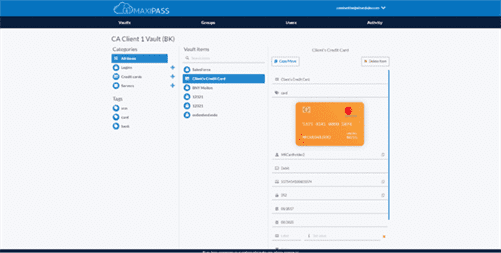azure-devops-docs docs user-guide about-azure-devops-services-tfs md at main MicrosoftDocs azure-devops-docs
Figure 29 drills down into the individual steps needed in order to deploy the database. Let’s take the directories and files that you need in a properly organized Git repository. Deployment to production should be completely boring if all needed capabilities azure devops benefits have been tested in upstream environments. In addition to this template, Azure provides some other methods to deploy directly from a GitHub repository if the architecture of your application is compatible with a file copy deployment.
Microsoft releases a new version every three weeks, which you have access to automatically, with no downtime. All software companies can currently start from scratch with Azure DevOps Services. Usually, however, an organization uses a predefined environment, such as TFS or on-premises DevOps Server. As change within an organization requires time, money, and energy, it is essential that you know in advance what a migration to Azure DevOps Services of this kind means and will provide.
Static Code Analysis
For your team, you’ll want to equip them with the Visual Studio Enterprise subscription (formerly called MSDN Premium) so that they have licensing for all of the products. If you’re putting your application in Azure, you really want to think about the architecture of your subscriptions and your resource groups. The independent service that’s been receiving lightning-fast adoption since early September is Azure Pipelines. Especially with the acquisition of GitHub, the experience to set up a build for a code-base stored in GitHub is simple and quick. I believe this type of consolidation will happen all across the industry. In the community of large enterprise software organizations, many define DevOps as development and operations coming together and working together from development through operations.
Use of the intranet means Azure DevOps Server can only be utilized on the server’s premises. In contrast, Azure DevOps connects to the public internet and https://www.globalcloudteam.com/ can be used anywhere by logging-in with a Microsoft account, Azure AD or personal access tokens — alternate passwords specifically for Azure DevOps.
Microsoft Azure Symbol / Icon Set Download — Visio stencil, PNG, and SVG
You’ve created a quick cycle of automation using Azure Pipelines so that you have a single build deployed to any number of environments, deploying both application components as well as your database. And you’ve enabled your stakeholders to test the working software as well as providing exploratory feedback using Azure Test Plans. It used to be common practice with centralized version control systems to use a pattern of sub-repositories. For example, in both SVN and TFVC, it was possible and very workable to create a series of top-level folders so that multiple teams could maintain applications.
Codefresh is powered by the Argo family of tools (Argo CD, Argo Rollouts, Argo Events, Argo Workflows) and is specifically designed for organizations that work with containers and cloud applications. Project teams use sprints, specified using Iteration Paths, to define the project’s sprint cadence, usually one to four weeks. Each sprint represents an assignment a given team must deliver by the specified deadline. Organizations should define realistic sprint cadences that all team members can commit to, with a minimum of six iterations (i.e., for a six-month plan). Microsoft also offers Azure DevOps Server, the evolution of Microsoft Team Foundation Server (TFS).
Azure Pipelines Builds and Deploys the Software
Just as in the previous workflow, a full audio and video capture runs seamlessly as the stakeholder narrates what he’s doing as he moves through the application. This is especially useful to capture subjective feedback and observe the user experience even in the absence of feedback. You may have ideas on how to streamline the experience of some features just by seeing the sequence of clicks and types that a stakeholder uses in order to perform a transaction. As your stakeholders adopt the Test & Feedback tool, encourage them to use the journaling feature to write any notes that come to mind. When you look into the task groups for the deployment of each of your application components, you see the individual steps.
- Furthermore, Test Plans enable users to test on any platform while having end-to-end traceability and powerful data gathering tools to diagnose any remedy identified issues.
- And, because of the nature of this environment’s configuration, it can be appropriate for running some non-functional test suites in the background.
- Finally, this environment type should be configured with similar scale specs as production, including monitoring and alerting.
- Note that it shouldn’t use production data because doing so likely increases the risk of data breaches by exposing sensitive data to an increased pool of personnel.
- You moved through each product in the Azure DevOps family, and you explored how the Onion Architecture enables applications to use the DevOps structure.
Azure DevOps consists of five services—which we’ll explore in this section. All these services can be grouped under individual projects so that users can have proper isolation between different projects using different technologies and catering to different needs. This also server offers a free variant called Azure DevOps Server Express, aimed at individual developers and small teams of up to five team members.
Boost Your Software Development with (Azure) DevOps
It takes snapshots of the files whenever a developer edits the code, saving the snapshot in a permanent record. Version control systems allow teams to coordinate their code changes and recall specific changes when required. Azure DevOps (formerly Visual Studio Team Services—VSTS) is a set of tools and services that help DevOps teams provision and manage production environments. It helps teams automate, orchestrate, and manage application and service delivery. Both Azure DevOps and Azure DevOps Server provide users with integrated and collaborative environments that support continuous integration, Git and Agile tools to plan and track work. The primary difference between the two options is that Azure DevOps is available as a service on the cloud while Azure DevOps Server is installed on-premises.

While most developers on the project team may use Azure DevOps, other team members may use tools that are purpose-built for their discipline. Planview Tasktop Hub makes sure all teams are on the same page regardless if they are on different tools. I’ve selected both the video camera and the screenshot icons and enabled them.
SOC 2 Type 2 Certified
Azure Artifacts enable users to integrate fully featured package management functionality to CI/CD pipelines. In this chapter, we covered some of the basics of DevOps and covered the six different DevOps principles. Then, we covered the key concepts of Azure DevOps and the different solutions that Azure DevOps has to offer to support teams throughout each of the application life cycle phases. After that, we looked at the different features that Azure DevOps has to offer, and we introduced and created the two scenarios that we will use in the upcoming chapters of this book.

If an organization wishes to rollback or even prevent updates altogether, this is possible with Modern Requirements4DevOps (aka MR4TFS). As a fully backwards compatible solution, Modern Requirements will continue to offer quarterly updates for you to test and deploy regardless of your Azure DevOps Server version. New features and updates will still be easily tested and trialed a week before our next Modern Requirements release and can be done in a sandbox environment. With Azure DevOps Server implemented on-premise, updates will have to be coordinated with both Modern Requirements and your system administration team. Updates can be done in off hours and we will work with your team to ensure there are no disruptions in service.
Release management
I suggest embedding the create date somehow as well as the work item number so that it ? Old branches become stale and risky, so you don’t want to keep branches around for long. In Figure 11, you can see that for the purposes of this article, I have all of the products enabled.